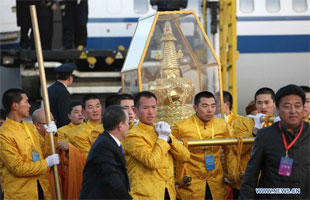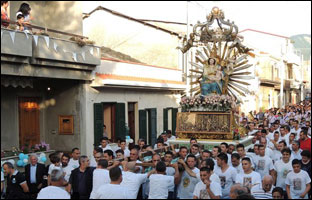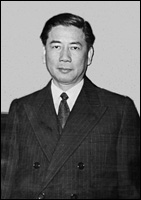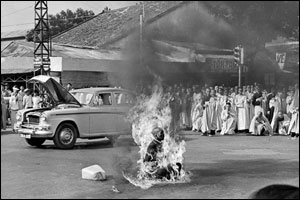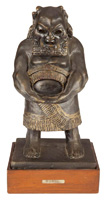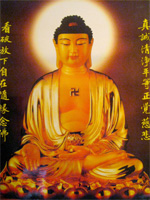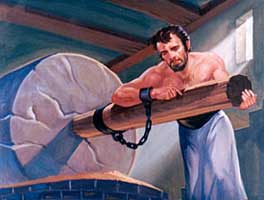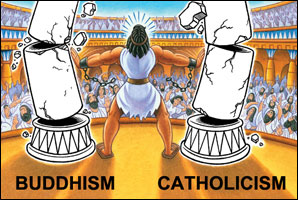"THEN SANG MOSES AND THE CHILDREN OF ISRAEL THIS SONG UNTO JEHOVAH, AND SPOKE SAYING, 'I WILL SING UNTO JEHOVAH, FOR HE HATH TRIUMPHED GLIRIOUSLY: THE HORSE AND HIS RIDER HE HATH THROWN INTO THE SEA"' (EXODUS 15:1). |
It is beyond belief but there are amazing similarities between Buddhism and Catholicism. Both religions began at the same time, both religions obtained temporal power about the same time, and both religions began their decline and fall about the same time.
|
|
|
Listing all the amazing similarities between the 2 religions would overload the server so here are just 13 of them:
BUDDHISM |
CATHOLICISM |
Buddha was born on December 25. |
Christ's birthday "Christmas" is celebrated on December 25. |
Female goddess Kuan Yin. |
"Holy Mother" Mary, Marie, or Maria. |
Monasteries and nunneries. |
Monasteries and nunneries. |
Priests, tonsured monks, and nuns. |
Priests, tonsured monks, and nuns. |
Statues, images, relics, and processions. |
Statues, images, relics, and processions. |
| Incense, candles, and bells. |
Incense, candles, and bells. |
"Blessed" water. |
"Holy" water. |
Prayer beads and bareheaded women "praying." |
Rosary beads and bareheaded women "praying." |
The SWASTIKA is a revered symbol. |
The SWASTIKA is a revered symbol. |
"Pure Land" intermediate state before Nirvana. |
"Purgatory" intermediate state before Heaven. |
Food offerings for the dead. |
Masses for the dead. |
All human progress condemned. |
|
Deadly cremation. |
There are some minor dissimilarities between the 2 religions: Chinese Buddhism never had anything comparable to transubstantiation or supersubstantial bread. Additionally, Buddhism has nothing comparable to the Latin Church confessional and Jesuit Matteo Ricci failed completely to introduce it into China.
Understanding Buddhist dogma concerning the afterlife is as difficult as solving Samson's riddle to the Philistines. They DENY the existence of the human soul (no soul, no Savior) yet they pray that the dead will have a good reincarnation in their future existence.....Buddhism is also a militant religion because good KARMA for Buddhists means "evangelizing" or making converts to Buddhism.
During the ministry of Joshua of Nazareth, he predicted that Satan would be totally defeated and kicked out of heaven:
And the seventy disciples returned with joy saying "Teacher, even the demons are subject to us through thy name." And he said unto them "I saw Satan fall from heaven like lightning. Behold, I give you power to tread on serpents and on scorpions and over all the power of the enemy and nothing shall by any means harm you" (Luke 10:17-19).
That prophecy was fulfilled to the letter when the Messiah ascended up to heaven after his resurrection from the dead:
And there was war in heaven: Michael and his angels fought against the dragon; and the dragon fought and his angels, And prevailed not; neither was their place found any more in heaven.And the great DRAGON was cast out, that old serpent, called the Devil, and Satan, which deceiveth the whole world: he was cast out into the earth, and his angels were cast out with him (Revelation 12: 7-9).
The expulsion of Satan meant the cleansing of heaven from his defiling footprints, but it was very, very bad news for the flat earth:
Therefore rejoice, ye heavens, and ye that dwell in them. Woe to the inhabitants of the earth and of the sea! for the devil is come down unto you, having great wrath, because he knoweth that he hath but a short time (Revelation 12:12).
In the Western world, the great geopolitical earthquake that happened at that time was the annexation of Britannia to the Roman Empire. For the previous 2000 years, that island was shrouded in secrecy and only the very bravest of souls dared enter that mysterious island.
|
|
By 60 AD, after fierce opposition from the Druids, the Romans established a tenuous presence on the island. The Romans established their capital at Londinium which was a location sacred to the twin giants Gog and Magog.
After the soldiers came the Christian missionaries. One of the most famous personages to visit the island was the Apostle Paul who is credited with planting the Gospel there.
|
When the Papacy was established by Jesus Constantine, the twins Romulus and Remus were now called Saints Peter and Paul.
With Satan and his fallen angels trapped under the glass ceiling dome, there was indeed hell to pay for the inhabitants of the flat earth. The next Satanic scene of action took place at the ends of the earth–in the country now called "Communist" China–but called the "Land of Sinim" in the Holy Bible (Isaiah 49:12).
Buddhism came to China on 2 white horses in 67 AD!!
Around 90 AD, the Messiah appeared to the Apostle John and gave him a panoramic view of the history of the world to the end of time. One of the most startling visions was the 4 Horsemen of the Apocalypse:And I saw when the Lamb opened one of the seals, and I heard, as it were the noise of thunder, one of the four living creatures saying, "Come and see". And I looked, and behold a white horse: and he that sat on him had a bow; and a crown was given unto him: and he went forth conquering, and to conquer (Apocalypse 6:1-2).
Like King Nebuchadnezzar of Babylon, the Chinese Emperor Ming had a horrible nightmare:
When therefore, in the year A.D. 61, the Emperor Ming had his dream or vision, one of his ministers, Fu-yih, could immediately refer the emperor to the Indian deity, Buddha. The dream was as follows: A huge golden figure came flying down from heaven. It halted in its course just over the emperor's palace. Here is swayed gently back and forth. The head was surrounded with a radiant light, and the light of the moon and the sun fell upon its body. The emperor was greatly terrified, but, on Fu-yih's assurance that the whole thing was only a reflection of the radiant Buddha in India, he was quieted. (Reichelt, Truth and Tradition in Chinese Buddhism, p. 11).
By that time, Christianity was gaining a beachhead in India, but the great distance of China from Jerusalem hindered the first Christian missionaries from reaching that vast distant land.
The Han Dynasty (206 BC–220 AD) was contemporaneous with the Roman Empire and with the birth, death, and Resurrection of the Messiah.
|
|
Here is an account of the delegation's journey to India:
Prompted by his strange experience, the Emperor Ming sent a delegation to seek further information about his deity. The deputation consisted of eighteen men, who left the capital, Luoyang (the present Honanfu), in the year 63 A.D., tracing their route across Asia. They finally reached Khotan, and from there travelled down to that part of north-east India which had shortly before been conquered by the "White Huns." Without great difficulty, they proceeded further, and within a short time, we find them in Magadha, south of the Ganges. (Reichelt, Truth and Tradition in Chinese Buddhism, p. 11).
The delegation returned to China with 2 Buddhist monks, and 2 white horses, loaded down with Buddhist images, relics and "scriptures:"
The place was a treasury of Buddhist relics and literature. The deputation succeeded in getting possession of a part of that treasure. Taking with them two Buddhist scholars (priests), they proceeded on the homeward journey. About the year A.D. 67, they reached China's capital city, Luoyang. The relics and sacred writing had been loaded on white horses, and, for that reason, the first temple that was built at Luoyang received the name of Pai-ma SSu, the "White Horse Temple," a temple name adopted later all over China. (Reichelt, Truth and Tradition in Chinese Buddhism, pp. 11-13).
That was the official beginning of Buddhism in China when the religion of the fallen angel Lucifer entered the country.
|
|
If the 2 horses could talk like Balaam's ass, they would have rebuked the Buddhist monks for their folly and madness. To honor the horses that brought Buddhism to China, Buddhist men began to wear their hair long (queue) at the back like a horse's tail.
Never from that time onward was China free from the ravages of the infamous 4 Horsemen of the Apocalypse.
Buddhism and Catholicism became temporal powers about the same time!!
Another amazing similarity between the 2 religions is the fact that they both achieved temporal or political power around the same time.
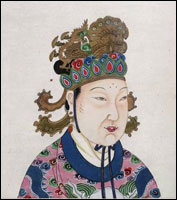 Empress Wu Zetain (624—705). Emperor from 690 until 705. |
|
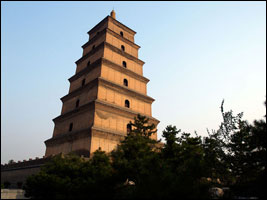 Giant Wild Goose Pagoda in Xi'an. |
The reign of Empress, and then Emperor Wu Zetain, was a veritable hell on earth for China. From the very beginning of her infamous career of murder and mayhem, she was sponsored by the Buddhist hierarchy.
She built thousands of Buddhist monasteries, and one of her most spectacular structures was the Giant Wild Goose Pagoda, rebuilt in 704. That pagoda still stands as a monument to the deadly grip that Buddhism has maintained on the country to this present day. Pagoda's are the Catholic equivalent of church steeples and both symbolize Nimrod's Tower of Babylon.
As Emperor, Wu Zetain changed many words in the Chinese language, and she also tried unsuccessfully to change the calendar by moving the Chinese New Year to the winter solstice. This was done to make the new year begin at the birthday of Buddha (December 25):
On the winter solstice in 689, from her Bright Hall complex, Wu Zhao promulgated an edict in which she announced that the state would discard the Tang calendar and begin to follow a new calendar based on the Zhao dynasty of antiquity. The winter solstice marked the end of the old cycle and the beginning of the new, of lengthening days, of coming spring. The calendar was reset so that the winter solstice marked the first day of the first month of the first year of a new era which she called Origin of Records, a name which clearly connotes the fresh beginning of time, of history, as though Wu Zhao was the first ruler, the only ruler, of a dawning new era. The issuance of a new calendar was a means by which a ruler made himself (or herself) master over time, and molded the ritual and ceremonial pattern of state in his own image. (Rotshschild, Wu Zetain: China's Only Woman Emperor, pp. 120-121).
The Papal States were originally ruled from Constantinople by the viceroy of the Emperor called the exarch of Ravenna. The territories were conquered by the Lombards, and Pope Stephen II (Pope from 752 to 757) sought the help of King Pepin of the Franks to expel them.
Pope Stephen II convinced the illiterate and credulous King Pepin (father of Charlemagne) that "St. Peter" had sent him an airmail letter from heaven calling on him to defend Rome and expel the Lombards.
|
The most infamous pious fraud in history was the airmail letter from "St. Peter" delivered to King Pepin commanding him to save Rome from the Lombards. From 755 onward, the Popes ruled over the Papal States as kings. Most of the Popes who ruled from Rome were monks or "nephews" of monks.
Additionally, Daniel the Prophet mentioned a period of 1260 years as the duration of the Pope's temporal power. That temporal power expired in 1870.
"Communism" is a smokescreen for Buddhism in China!!
The Holy Bible says that "the leopard cannot change its spots" and Satan's stranglehold on China has never yet been broken. The Evil One does not let his captives go without a tremendous struggle.
There are also many similarities between Communism and Buddhism. Like Buddhists, Communists DENY the existence of the human soul but Communists don't get to come back or be reincarnated.
|
|
While officially telling the world that his regime was based on atheistic Marxism-Leninism, Mao never missed an opportunity to advance Buddhism in China.
Both "Communists" were intimately involved in the construction of the Tooth Relic Pagoda and of course they paid their respects to Buddha's tooth.
|
|
|
Under the tight censorship of the "Communist" regime, not a word leaked out to the Western world:
A phenomenon that has no parallel, as far as I know, in other Communist countries was the construction of buildings–not minor buildings incidental to a restoration project but entirely new structures created to house relics and commemorate eminent monks. The outstanding example was the Buddha Tooth Pagoda outside Peking. Standing 50 meters high, its gleaming roof tiled in green, its finial covered with gold leaf, it looked like such a perfect example of traditional Chinese architecture that it was hard to believe that it dated from 1957. Perhaps because it may someday be embarrassing for a Communist regime to explain why it had created "a new holy place," complete with altars, images, and guardian gods, the initiative for its construction was said to have come from the Chinese Buddhist Association, which supervised the work of a pagoda-construction committee of architects, artists and sculptors. (Welch, Buddhism Under Mao, p. 153).
Formally named Pagoda of the Tooth Relic of Buddha, it is the only great pagoda for the preservation of Buddhist relics built after 1949. Sponsored by Buddhist circles in China, the pagoda was constructed at the Temple of Divine Light, second of the eight great sites in the Western Hills to enshrine a relic tooth of Sakyamuni preserved in China for more than fifteen hundred years.
|
|
|
Staff members carry the pagoda containing the Sakyamuni tooth sarira, a sacred Buddhist relic, off the chartered plane at Beijing Capital International Airport in Beijing, capital of China, Dec. 24, 2011. The Sakyamuni tooth sarira returned to China on Saturday after concluding its fourth trip to Myanmar (Burma) for 48-day public obeisance in the country. It was later carried to the Lingguang Temple in Beijing, the relic's permanent residence. During the past 48 days, the relic was worshipped by over 4 million people in Myanmar's Yangon, Nay Pyi Taw and Mandalay. (Xinhua/Li Fangyu).
|
|
On June 11, 1963, a Buddhist monk named Thich Quang Duc set himself on fire to protest the repressive Catholic regime of President Diem.
The only winner of the Korean and Vietnamese conflicts was Chinese Buddhism. Buddhists from all over Asia joined the fight against the Pentagon sponsored war and the war produced over 50,000 casualties in the United States. The war was so divisive and unpopular that the social fabric of the nation was torn apart. That war also had a major impact on the Presidential election of 1968 when Republican Richard Nixon was elected President.
When Mao died under mysterious circumstances in 1976, his body was cremated and then the ashes were placed inside a wax dummy look-alike. Millions of people view Mao's wax dummy in Tiananmen Square, but they would need x-ray vision to view Mao's ashes.Buddha is another name for Dagon—the ugly idol of the Philistines!!
There is a fascinating end of the world scenario found in the Old Covenant section of the Holy Bible. It is the story of Samson and Delilah. Samson was a mighty man and an army of one . . . who was invincible . . . until he met Delilah.
The story of Samson and Delilah is a thrilling visual aid acted out in history (circa 1000 BC) by real people. Samson (Heb. like the sun) was bound and blinded by the Philistines and turned into a beast of burden.
|
|
|
The Philistines practiced cremation . . . but they didn't even wait until the person was dead....As revenge for giving his wife to another man, Samson tied 300 foxes by their tails, and put torches in their tails. Then he lit the torches and set the foxes loose in the standing grain of the Philistines:
Then the Philistines said, "who hath done this?" And they answered, "Samson, the son-in-law of the Timnite, because he had taken his wife, and given her to his companion." So the Philistines came up, and burnt her and her father with fire (Judges 15:6).
The first disciple of Buddha was cremated and his fake relics are still adored by millions of Buddhists. The swastika is also revered by Buddhists and Catholics. The ubiquitous symbol of the Nazi Third Reich was the swastika.
|
|
Samson's greatest triumph came just before he died when he collapsed the 2 pillars of the temple of Dagon.
As his hair began to grow again, the blind, wretched, miserable Samson regained his strength, and brought down the temple of Dagon on the heads of the Philistines:
And Samson called unto JEHOVAH, and said, "O JEHOVAH Elohim, remember me, I pray thee, and strengthen me, I pray thee, only this once, O Elohim, that I may be at once avenged of the Philistines for my two eyes."
And Samson took hold of the two middle pillars upon which the house stood, and on which it was borne up, of the one with his right hand, and of the other with his left.
And Samson said, "Let me die with the Philistines." And he bowed himself with all his might; and the house fell upon the lords, and upon all the people that were therein. So the dead which he slew at his death were more than they which he slew in his life (Judges 16:29-30).
That is where the expression "bringing down the house originated." Samson did not undergo pagan cremation because his loving family came and rescued his body from the ruins of the temple of Dagon:
Then his brothers and all his father’s household came down and took him, and brought him up and buried him between Zorah and Eshtaol in the tomb of his father Manoah. He had judged Israel twenty years (Judges 16:31).
The Jewish Messiah is our only Intercessor and Mediator. He is praying right now that all true Christians regain their spiritual sight and become Samsons for Christ.
Vital links
References
Becker, Carl B. Breaking the Circle: Death and the Afterlife in Buddhism. Southern Illinois University Press, 1993.
Benn, Charles. China's Golden Age: Everyday Life in the Tang Dynasty. Oxford University Press. Oxford and New York, 2002.
Chang, Jung, & Halliday, Jon. MAO: The Unknown Story. Alfred A. Knopf. New York, 2005.
Clements, Jonathan. Wu : the Chinese Empress who Schemed, Seduced and Murdered her way to become a living god. Sutton Publishers, Stroud. Gloucestershire, U.K.. 2007.
Jisheng Yang; Edward Friedman; Jian Guo; Stacy Mosher. Tombstone: The Untold Story of Mao's Great Famine. Allen Lane, London, U.K., 2012.
Reichelt, Karl Ludvig. Truth and Tradition in Chinese Buddhism. Commercial Press, Shanghai, 1928.
Rothschild, N. Harry. Wu Zhao. China's Only Woman Emperor. Pearson Longman, New York, 2008.
Snow, Edgar. Red Star Over China: A Personal Account of the Chinese Revolution. Grove Press, New York, 1968.
Taylor, James Hudson. Hudson Taylor and the China Inland Mission. Morgan & Scott, London, U.K., 1918. (A free online biography of the great British missionary Hudson Taylor).
Welch, Holmes. Buddhism Under Mao. Harvard University Press, Cambridge, Massachusetts, 1972.
Welch, Holmes. The Practice of Chinese Buddhism, 1900-1950. Harvard University Press, Cambridge, Massachusetts, 1972.
Wayland, Francis. A Memoir of the Life and Labors of the Rev. Adoniram Judson. Phillips, Sampson & Co., Boston, 1853. (A free online biography of the first U.S. missionary to Buddhist Myanmar (Burma).
Yutang, Lin. Lady Wu. G.P. Putnam's Sons, New York, 1965.
Zhisui. Li. The Private Life of Chairman Mao: The Memoirs of Mao's Personal Physician. Random House, New York, 1994.
Jisheng Yang; Edward Friedman; Jian Guo; Stacy Mosher.
Copyright © 2016 by Patrick Scrivener

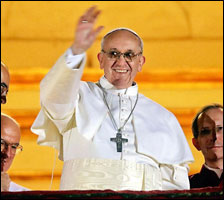
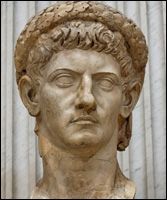
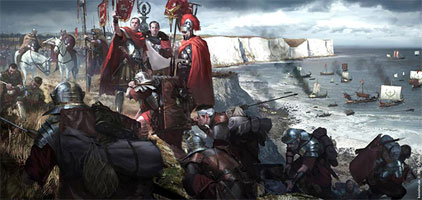 Artistic depiction of the Roman
Artistic depiction of the Roman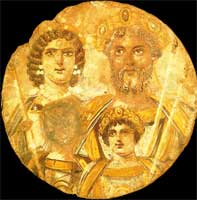
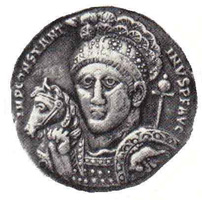
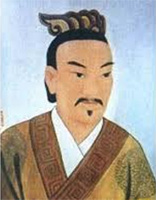
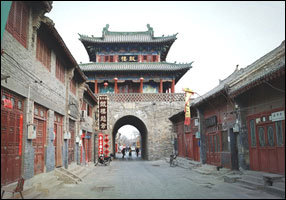

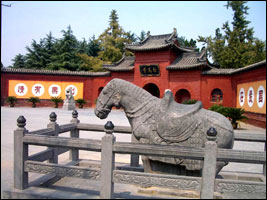
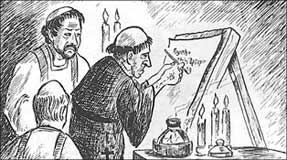
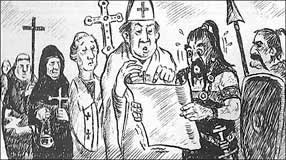
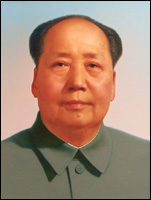
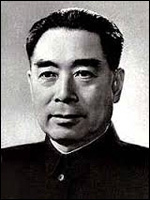
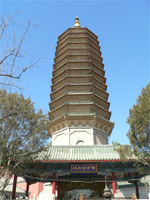
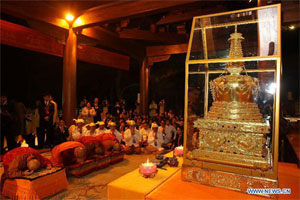 Buddha's tooth is preserved in a small gold pagoda in the middle of the hall.
Buddha's tooth is preserved in a small gold pagoda in the middle of the hall. 